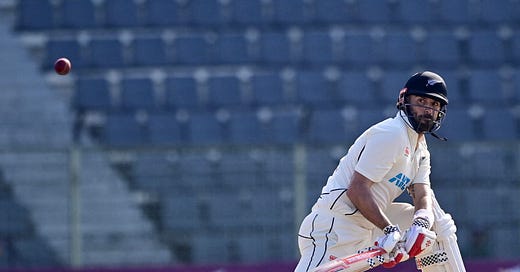Monday Mash-up: A bad weekend for cricket
Beaudy's back (again?), rugby's head case rumbles on slowly, a Knotty problem and Warner gets a send-off.
We’ll start with the obvious: that wasn’t a great week for New Zealand cricket.
A first test loss in Bangladesh for the men; a first T20I loss against Pakistan for the women.
First, to picturesque Sylhet, where the Black Caps lost to a Bangladesh team who were without Shakib Al Hasan, who is recovering from a finger injury and trying to enter …
Keep reading with a 7-day free trial
Subscribe to The Bounce to keep reading this post and get 7 days of free access to the full post archives.




